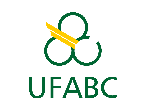PPGCTA
PÓS-GRADUAÇÃO EM CIÊNCIA E TECNOLOGIA AMBIENTAL
FUNDAÇÃO UNIVERSIDADE FEDERAL DO ABC
Phone:
1142242590
E-mail:
pgcta@ufabc.edu.br
http://propg.ufabc.edu.br/ppgcta
Banca de DEFESA: THAIS DE ARAUJO GOYA PEDUTO
Uma banca de DEFESA de MESTRADO foi cadastrada pelo programa.DISCENTE : THAIS DE ARAUJO GOYA PEDUTO
DATA : 26/11/2020
HORA: 13:30
LOCAL: WEBCONFERÊNCIA
TÍTULO:
BIOENSAIOS WITH SEEDS: STUDY AND APPLICATION IN THE SPACE-TEMPORAL EVALUATION OF THE PHITOTOXICITY OF
RIO GRANDE RESERVOIR WATERSPÁGINAS: 100
GRANDE ÁREA: Engenharias
ÁREA: Engenharia Sanitária
SUBÁREA: Saneamento Ambiental
ESPECIALIDADE: Qualidade do Ar, das Águas e do Solo
RESUMO:
Pollution of aquatic ecosystems can harm aquatic life and public health problems. Thus, environmental monitoring is an important step in preventing these problems. However, due to the high number of substances that can be found, its individual identification is difficult. In this way, Ecotoxicology emerges as a tool for evaluating the interactions of substances with the environment in which organisms live and several tests have already been used by regulatory agencies, but with high and laborious costs. Thus, in vitro seed bioassays can contribute to this gap since they are simple to perform and low cost. This study aimed to: (1) evaluate the sensitivity and performance of six species of seeds: Allium cepa, Cucumis sativus, Lactuca sativa, Lepidium sativum, Sinapis alba and Eruca sativa in in vitro bioassays; (2) generate a phytotoxicity classification scale associated with nutrient pollution; (3) apply bioassays to assess the phytotoxicity of waters in the Rio Grande Reservoir and its relationship with limnological variables, in order to assist in the decision-making process of public policies. The bioassays consisted of incubating the seeds with aliquots of the samples in Petri dishes. The incubation time was specific for each type of seed. The germination index (GI) was calculated to classify phytotoxicity. To determine the scale, isolated and combined NO3- and PO43- solutions were evaluated. Five samples were taken from subsurface and deep-water samples from the Rio Grande Reservoir in 3 sampling stations over a year: E1 (catchment), E2 (central body) and E3 (Ribeirão Pires). Some limnological variables were measured. The results indicated that S. alba showed high sensitivity to stimulant and inhibitor compounds. The isolated concentrations of NO3- and PO43- stimulated seed germination. While combined and in high concentrations, they presented moderate phytotoxicity. The waters of the Rio Grande Reservoir stimulated seed germination, with high GI values. The environmental variables, in subsurface waters, showed a correlation between the species S. alba, dissolved oxygen and pH. While in bottom waters, the correlation was more significant between the species L. sativum and the parameters electrical conductivity, nitrogen, and total phosphorus. It is concluded that the species L. sativum and S. alba are excellent plant bioindicators, with the potential to be adopted as a parameter of water quality in reservoirs.
MEMBROS DA BANCA:
Presidente - Interno ao Programa - 1809833 - TATIANE ARAUJO DE JESUS
Membro Titular - Examinador(a) Interno ao Programa - 1814655 - LUCIA HELENA GOMES COELHO
Membro Titular - Examinador(a) Externo à Instituição - ANA LUCIA BRANDIMARTE - USP
Membro Suplente - Examinador(a) Interno ao Programa - 3047358 - RICARDO HIDEO TANIWAKI
Membro Suplente - Examinador(a) Externo à Instituição - EDUARDO CIMINO CERVI
Notícia cadastrada em: 04/11/2020 08:49
SIGAA | UFABC - Núcleo de Tecnologia da Informação - ||||| | Copyright © 2006-2024 - UFRN - sigaa-1.ufabc.int.br.sigaa-1-prod




